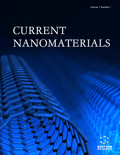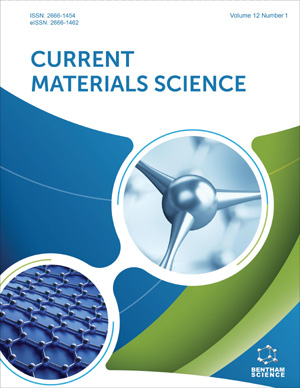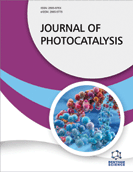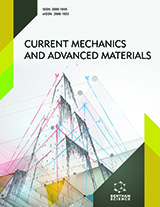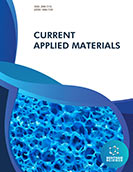Abstract
World water resources are barely alive due to various factors such as rise in population, adverse changes in the environment and the effects of pollutants, which increase the demand for fresh-water. Numerous techniques have been developed to solve the problem of water inadequacy, but most of them are adverse with respect to the environment and economy. Graphene-oxide (GO) nanopore materials may be an effective solution for water-purification due to its properties of easy fabrication and modification. This next-generation membrane has high waterflux, selectivity, and permeability to selected molecules. In this discussion, we have covered the latest technologies and potential applications of GO for waterpurification, which shall help researchers to get quick ideas for future research to design and fabricate multi-layered GO membranes. This article gives a snapshot of current status and proposed strategies of graphene-membranes for water treatment with earlier information to wastewater management and stimulated progress in this area from 2017 to date. The future challenges and opportunities in this field have also been highlighted.
Keywords: GO, nanocomposite membranes, wastewater effluents, fouling, water-flux, desalination, fabrication.
Graphical Abstract
Current Nanomaterials
Title:Graphene Oxide Membrane: Recent Advancement in Waste Water Treatment and its Applications
Volume: 5 Issue: 2
Author(s): Nusrat Sahiba, Pankaj Teli, Prakash Prajapat and Shikha Agarwal*
Affiliation:
- Department of Chemistry, Synthetic Organic Chemistry Laboratory, Mohanlal Sukhadia University, Udaipur 313001,India
Keywords: GO, nanocomposite membranes, wastewater effluents, fouling, water-flux, desalination, fabrication.
Abstract: World water resources are barely alive due to various factors such as rise in population, adverse changes in the environment and the effects of pollutants, which increase the demand for fresh-water. Numerous techniques have been developed to solve the problem of water inadequacy, but most of them are adverse with respect to the environment and economy. Graphene-oxide (GO) nanopore materials may be an effective solution for water-purification due to its properties of easy fabrication and modification. This next-generation membrane has high waterflux, selectivity, and permeability to selected molecules. In this discussion, we have covered the latest technologies and potential applications of GO for waterpurification, which shall help researchers to get quick ideas for future research to design and fabricate multi-layered GO membranes. This article gives a snapshot of current status and proposed strategies of graphene-membranes for water treatment with earlier information to wastewater management and stimulated progress in this area from 2017 to date. The future challenges and opportunities in this field have also been highlighted.
Export Options
About this article
Cite this article as:
Sahiba Nusrat , Teli Pankaj , Prajapat Prakash and Agarwal Shikha *, Graphene Oxide Membrane: Recent Advancement in Waste Water Treatment and its Applications, Current Nanomaterials 2020; 5 (2) . https://dx.doi.org/10.2174/2405461505999200527140938
| DOI https://dx.doi.org/10.2174/2405461505999200527140938 |
Print ISSN 2405-4615 |
| Publisher Name Bentham Science Publisher |
Online ISSN 2405-4623 |
 22
22
- Author Guidelines
- Bentham Author Support Services (BASS)
- Graphical Abstracts
- Fabricating and Stating False Information
- Research Misconduct
- Post Publication Discussions and Corrections
- Publishing Ethics and Rectitude
- Increase Visibility of Your Article
- Archiving Policies
- Peer Review Workflow
- Order Your Article Before Print
- Promote Your Article
- Manuscript Transfer Facility
- Editorial Policies
- Allegations from Whistleblowers
Related Articles
-
Restoring the Dysfunctional Endothelium
Current Pharmaceutical Design Oxidative Stress and Mitochondrial Dysfunction in Sepsis: A Potential Therapy with Mitochondria-Targeted Antioxidants
Infectious Disorders - Drug Targets Vascular Changes of the Retina and Choroid in Systemic Lupus Erythematosus: Pathology and Pathogenesis
Current Neurovascular Research The Importance of Melatonin and Mitochondria Interaction in Mood Disorders and Schizophrenia: A Current Assessment
Current Medicinal Chemistry Alcohol Abuse, Immunosuppression, and Pulmonary Infection
Current Drug Abuse Reviews Antibodies Against Recombinant Catalytic Domain of Lethal Toxin of Clostridium sordellii Neutralize Lethal Toxin Toxicity in HeLa Cells
Protein & Peptide Letters Disposition of Flavonoids Impacts their Efficacy and Safety
Current Drug Metabolism The Role of Metabolizing Enzymes and Transporters in Antiretroviral Therapy
Current Topics in Medicinal Chemistry Clinical Management of the Cardiovascular Failure in Sepsis
Current Vascular Pharmacology The Pathophysiology of Heart Failure in Children: The Basics
Current Cardiology Reviews Hypothetical Role of Growth Factors to Reduce Intervertebral Disc Degeneration Significantly through Trained Biological Transformations
Current Pharmaceutical Design Current Concepts and Controversies in the Use of Antenatal Corticosteroid Therapy for Prevention of Neonatal Morbidities
Current Women`s Health Reviews Pharmacological manipulation of peripheral vascular resistance in special clinical situations after pediatric cardiac surgery
Current Vascular Pharmacology Recent Advances in Protein and Peptide Drug Delivery Systems
Current Drug Delivery TRP Channels as Therapeutic Targets in Kidney Disease and Hypertension
Current Topics in Medicinal Chemistry Pathophysiology of HIV-1 in Semen: Current Evidence for Compartmentalisation and Penetration by Antiretroviral Drugs
Current HIV Research Phytotherapeutic and Natural Compound Applications for Age-Related, Inflammatory and Serious Eye Ailments
Current Molecular Pharmacology Omega-3 Fatty Acids and their Role in Central Nervous System - A Review
Current Medicinal Chemistry VEGF/VEGFR Pathway Inhibitors as Anti-Angiogenic Agents: Present and Future
Current Cancer Drug Targets Alveolar Cell Wounding by Deforming Stress in the Lung
Current Respiratory Medicine Reviews


